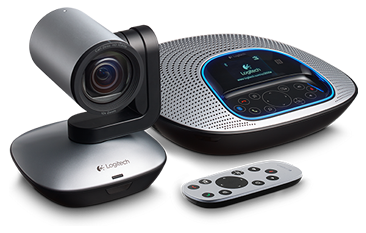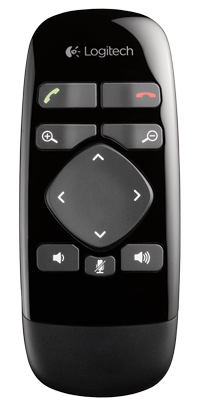Nothing beats meeting business partners in person and collaborating to get things done, however time and budget constraints means face to face meetings are less and less likely in businesses with multiple sites. These days, as the quality of video conferencing has improved and become more accessible, collaborative teams are increasingly turning to video to connect with colleagues across the globe.
Logitech is at the forefront of bringing innovative and affordable video conferencing devices to market and we've always been obsessed with user experience – read our top tips below on getting the most out of your video conferencing experience.
Businesses and teams know that they can accelerate the speed of business with instant communication, foster great team relationships with rich, high-definition video, not to mention the significant savings made in travel costs and on personal time. Nonetheless, the technology can still seem a little daunting to those new to video conferencing; it's important to get familiar with the technology and overcome any inhibitions quickly in order to get the best out of it.
Become an expert with the technology.
The goal to become so proficient that the technology becomes a natural extension of you and the people on the other end forget that you're not there with them. If you're uncomfortable operating the software or hardware, you will be so focused on trying to make it work that it will undermine the natural flow of the meeting and detract from your effectiveness. Having a simple laminated user guide in the meeting room really helps. It also pays to spend the time to have a couple of practice runs on your own time to gain fluency with the software and hardware so you can use it effortlessly when meeting with others.
Timing is everything.
Give yourself plenty of time to prepare for your video call. When scheduling the meeting in the calendar, give yourself an extra 5 or 10 minutes before the actual start time to get the software and hardware launched and running properly with your PC. That way, you'll be ready for the call when the other participants arrive, not struggling with settings, cables or suchlike. Ensure that lighting and temperature in the room are adequate so that you and other participants are sitting comfortably, and take those few minutes at the beginning to smile, say hello and establish rapport among the team.
Look directly into the camera.
Eye contact is important in any human conversation and allows us connect on a personal level with one another. Yet video conversations sometimes don't allow true eye contact to occur due to where the camera is placed relative to the screen: if you talk to your colleague's image on the screen, when the camera is off to the side, for example, it may come across as looking away or up or down from where they are. The good news is this is easily resolved by always looking directly into the camera; for those on the other side, it will feel like you're looking directly at them and engaging with eye contact.
Turn up the body language.
Just like a conversation, body language cues are one of the big benefits of visual communication, over a regular phone call. For example, in a physical meeting, you might lean forward slightly or look at the meeting owner to indicate you'd like to speak. These subtle gestures might not be picked up on a video call, so you might want to do something more exaggerated, like raise your hand to create a clear signal that you'd like to say something. Be a friend when you sense that somebody is trying to jump in a heated conversation by saying “I think Mike would like to say something.” Likewise, help avoid confusion when asking a question, by directing it to the right person using their name.
If your camera moves – use it!
Some video systems, like Logitech's ConferenceCam range, allow you pan, tilt, or zoom the camera to dynamically manage the view of the meeting. Decide how do you want to come across to your virtual team: zoomed in so they see your head and shoulders, or zoomed out so that you're seen sitting at the end of the table? Neither is right or wrong; the goal is to be immersed in the meeting so that everyone quickly forgets they're not in the same place. Likewise, it's the most natural thing in the world to get up in a meeting to illustrate a point on a flip chart. Nothing cuts the distance between virtual teams than zooming in on a sketch or a couple of bullet points noted on a white board.
Don't forget your manners.
Meeting etiquette, whether in person, or in virtual meetings is vital to running an efficient meeting. Be courteous. Start the meeting and end the meeting on time. Make sure participants have the correct dial-in details. Email important documents ahead of the meeting giving everyone enough time to review in advance. If you are tasked with taking minutes, ensure they are sent out promptly with clear action items and owners assigned. Use the mute button to avoid audio feedback and double-talk when somebody else is speaking, and deactivate when you want to speak. As with any meeting, give the speaker your full attention and try to avoid side conversations.
At Logitech for Business, we're all about collaboration. Our ConferenceCams combine breakthrough affordability with professional audio and video to turn any meeting place into a video-enabled collaboration space. Our devices are plug-and-play and designed to work with your familiar UC (Unified Communications) or VC (Video Conferencing) application.
Learn more at http://www.logitech.com/en-gb/for-business/products/conferencecam












